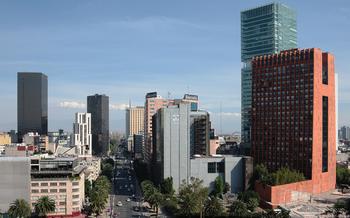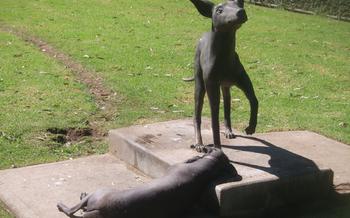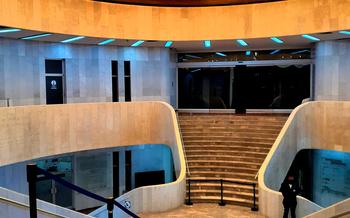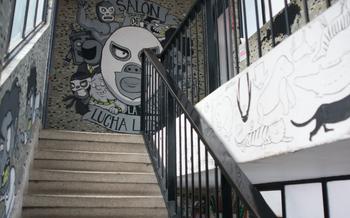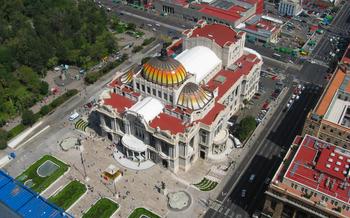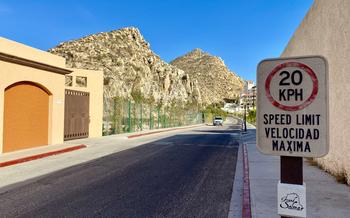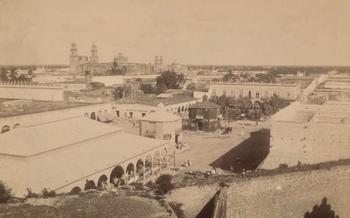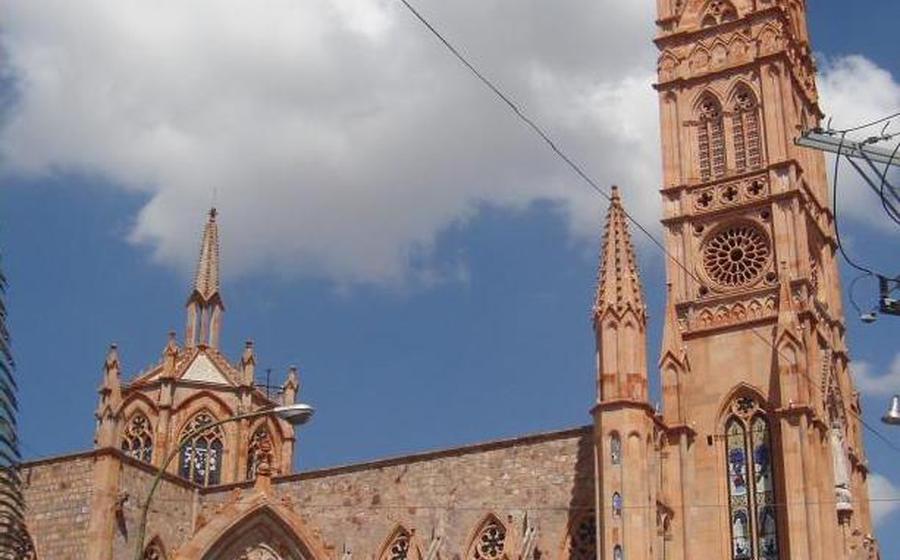
Museo de la Inquisicion
- Museo de la Inquisicion: A Glimpse into Mexico's Colonial Past
- Exploring the Museum's Architecture and Design
- Documenting the Lives of Victims and Survivors
- Controversies and Historical Debates
- The Museum as a Symbol of Reconciliation
- Planning Your Visit: Essential Tips
- Uncovering Hidden Gems in the Museum's Collection
- The Museum's Contribution to Historical Research
- Educational Programs and Outreach Initiatives
- Educational Workshops and School Visits
- Outreach Programs for Communities and Organizations
- Online Resources and Educational Materials
- Partnerships with Educational Institutions
- Cultural Events and Special Exhibitions
- Preserving the Legacy: Conservation and Restoration Efforts
- Accessibility and Inclusivity for All Visitors
- Insider Tip: Unveiling the Hidden Chamber
Museo de la Inquisicion: A Glimpse into Mexico's Colonial Past
Step into the Museo de la Inquisicion, a haunting yet captivating journey through the dark chapters of Mexico's colonial history. Housed within the former headquarters of the Holy Office, this museum unveils the chilling secrets of the Inquisition, a religious tribunal that wielded immense power and influence during the 16th to 19th centuries. Immerse yourself in a world of intrigue, torture, and unwavering faith as you explore the museum's thought-provoking exhibits, interactive displays, and poignant artifacts that bring the past vividly to life.
Exploring the Museum's Architecture and Design
The Museo de la Inquisición stands as a testament to the architectural ingenuity and historical significance of its time. Its unique design blends colonial and neoclassical elements, creating a visually captivating structure that reflects the city's rich heritage. The building's exterior facade is adorned with intricate carvings, arches, and balconies, showcasing the craftsmanship and artistry of the era.
Stepping inside the museum, visitors are greeted by a grand courtyard surrounded by two levels of galleries and exhibitions. The central staircase, with its wrought-iron railings and decorative banisters, leads to the upper floors, where visitors can explore the various exhibits and artifacts. The museum's layout is designed to guide visitors through the history and significance of the Inquisition, with each room and gallery offering a unique perspective on this dark chapter in Mexico's past.
The architecture of the Museo de la Inquisición is not merely a backdrop for its exhibits; it is an integral part of the museum's storytelling. The building's design evokes a sense of awe and reverence, reminding visitors of the power and influence wielded by the Inquisition during its reign. At the same time, the museum's modern and interactive exhibits create a dynamic contrast, inviting visitors to engage with the past in a meaningful and thought-provoking way.
Documenting the Lives of Victims and Survivors
The Museo de la Inquisición also serves as a poignant memorial to the countless victims and survivors of the Inquisition. Through personal stories and testimonies, the museum sheds light on the harrowing experiences of those who were accused, tried, and punished by the Holy Office. Artifacts and documents, such as trial records and letters, provide a glimpse into their lives and struggles. The museum commemorates the victims and their fight for justice, honoring their resilience and the suffering they endured. Ongoing research and documentation efforts continue to uncover new information about the lives of those affected by the Inquisition, ensuring that their stories are never forgotten.
Controversies and Historical Debates
The Museo de la Inquisicion has been the subject of ongoing controversies and historical debates. Disagreements surround the accuracy and interpretation of historical records, particularly regarding the extent of the Inquisition's brutality and its impact on Mexican society. Some critics argue that the museum presents a biased and sensationalized portrayal of the Inquisition, while others contend that it is an important tool for shedding light on a dark chapter in Mexican history.
Perspectives on the role of the Inquisition in Mexican society vary widely. Some scholars view it as a necessary institution that maintained social order and religious orthodoxy during a time of great upheaval. Others condemn it as a cruel and oppressive force that stifled dissent and intellectual freedom. These debates reflect the complexity and ambiguity of the Inquisition's legacy, which continues to be a source of discussion and controversy among historians and scholars.
The museum has played a crucial role in facilitating these debates by providing a platform for diverse viewpoints and encouraging dialogue. Through its exhibits, educational programs, and research initiatives, the museum seeks to foster a deeper understanding of the Inquisition and its lasting impact on Mexican society.
The Museum as a Symbol of Reconciliation
The Museo de la Inquisicion stands as a powerful symbol of reconciliation and healing in Mexico. It acknowledges the dark past of the Inquisition while also promoting understanding and forgiveness. The museum collaborates with religious and cultural institutions to foster dialogue and healing among communities affected by the Inquisition's legacy. Educational programs emphasize tolerance and respect, encouraging visitors to reflect on the importance of peaceful coexistence and religious freedom. By creating a space for dialogue and understanding, the museum plays a vital role in promoting reconciliation and fostering a more tolerant and inclusive society in Mexico.
Planning Your Visit: Essential Tips
To make the most of your visit to the Museo de la Inquisicion, careful planning is essential. Here are some insider tips to ensure a smooth and enriching experience:
-
Best Time to Visit: Aim to visit the museum during the off-season (May to September) to avoid crowds and enjoy a more intimate exploration. Alternatively, early mornings or late afternoons offer a quieter atmosphere during peak tourist seasons.
-
Advance Booking and Reservations: To guarantee your entry, especially during busy periods, consider booking your tickets online in advance. This will save you time and allow you to skip any queues.
-
Guided Tours vs. Self-Guided Exploration: Guided tours are an excellent option for a comprehensive understanding of the museum's exhibits. However, if you prefer a more independent exploration, audio guides are available to provide insightful commentary at your own pace.
-
Facilities and Amenities: The museum offers basic amenities such as restrooms, a gift shop, and a small cafe. However, it's advisable to bring your own water and snacks, as there are limited food options available nearby.
Uncovering Hidden Gems in the Museum's Collection
Beyond the well-known exhibits, the Museo de la Inquisicion holds a treasure trove of hidden gems that offer unique insights into this dark chapter of Mexican history. One such gem is a small, unassuming room tucked away in a corner of the museum. This room houses a collection of personal belongings confiscated from victims of the Inquisition, including jewelry, clothing, and religious objects. These artifacts provide a glimpse into the lives of the individuals who were subjected to the Inquisition's cruel and unjust practices.
Another hidden gem is a series of letters written by prisoners to their loved ones. These letters, which were often smuggled out of the prison, reveal the prisoners' hopes, fears, and despair. They offer a poignant reminder of the human toll of the Inquisition.
For those interested in the history of the Inquisition, the museum's library houses a collection of rare books and manuscripts. These documents provide valuable insights into the inner workings of the Inquisition and the lives of its victims.
To discover these hidden gems, visitors are encouraged to explore the museum at their own pace or take a guided tour. The museum's knowledgeable guides can provide additional context and insights into these fascinating artifacts.
The Museum's Contribution to Historical Research
The Museo de la Inquisición has become a cornerstone for historical research on Mexico's colonial past and the Inquisition's influence. Scholars and researchers from around the world collaborate with the museum to access its valuable collection of artifacts, documents, and archival records. This collaboration has resulted in numerous publications and academic initiatives that have significantly advanced our understanding of Mexican history.
The museum's research focuses on various aspects of the Inquisition, including its methods of operation, the trials and punishments of heretics, and the social and cultural impact of the institution. Researchers utilize the museum's resources to investigate the lives of individuals who were affected by the Inquisition, shedding light on their experiences and struggles.
Through its research and publications, the Museo de la Inquisición plays a crucial role in preserving and disseminating knowledge about this dark chapter in Mexican history. Its contribution to historical research helps to ensure that the memory of the victims of the Inquisition is honored and that their stories are never forgotten.
Educational Programs and Outreach Initiatives
The Museo de la Inquisicion is committed to fostering a culture of learning and understanding about Mexico's colonial history and the legacy of the Inquisition. Through a range of educational programs and outreach initiatives, the museum aims to engage visitors of all ages and backgrounds, promoting critical thinking, empathy, and historical awareness.
Educational Workshops and School Visits
The museum offers educational workshops and guided tours tailored to school groups, providing students with an immersive and interactive learning experience. These programs explore the history of the Inquisition, its impact on Mexican society, and the stories of those who were affected by it. Through hands-on activities, discussions, and multimedia presentations, students gain a deeper understanding of this complex and often overlooked chapter of Mexican history.
Outreach Programs for Communities and Organizations
The Museo de la Inquisicion extends its educational reach beyond its walls through outreach programs that engage with communities and organizations throughout Zacatecas and beyond. These programs include lectures, seminars, and workshops that bring the museum's expertise and resources to a wider audience. The museum also collaborates with local schools, universities, and cultural institutions to develop joint initiatives and educational materials.
Online Resources and Educational Materials
To further its educational mission, the museum has developed a comprehensive range of online resources and educational materials. These include virtual tours, interactive exhibits, downloadable lesson plans, and historical documents. Through its website and social media platforms, the museum provides access to its collections, research findings, and educational programs, reaching a global audience and promoting lifelong learning.
Partnerships with Educational Institutions
The Museo de la Inquisicion actively collaborates with educational institutions, both in Mexico and internationally, to advance research and promote historical understanding. These partnerships involve joint research projects, student exchanges, and the development of educational programs. Through these collaborations, the museum contributes to the training of future historians and educators, ensuring that the legacy of the Inquisition continues to be studied and understood.
Cultural Events and Special Exhibitions
The Museo de la Inquisicion hosts a variety of cultural events and special exhibitions throughout the year, offering visitors a dynamic and engaging experience. Temporary exhibitions delve into specific aspects of the Inquisition's history, showcasing artifacts, documents, and multimedia presentations that provide fresh perspectives on this complex period. The museum also collaborates with artists and performers to create immersive installations and performances that bring the past to life.
Lectures, seminars, and panel discussions are regularly organized, featuring renowned historians, scholars, and experts who share their insights on the Inquisition and its impact on Mexican society. These events provide a platform for knowledge sharing, dialogue, and critical thinking, encouraging visitors to engage with the museum's content on a deeper level.
Special events, such as themed festivals, workshops, and reenactments, offer a unique opportunity for visitors to immerse themselves in the history and culture of the Inquisition era. These events often involve hands-on activities, demonstrations, and interactive experiences that make learning fun and memorable.
Participating in cultural events and special exhibitions at the Museo de la Inquisicion enriches the visitor experience, providing a comprehensive understanding of the Inquisition's legacy and its relevance to contemporary society.
Preserving the Legacy: Conservation and Restoration Efforts
The Museo de la Inquisicion is committed to preserving the legacy of the Inquisition through ongoing conservation and restoration efforts. These projects aim to protect and maintain the museum's artifacts and exhibits, ensuring their longevity for future generations.
The museum collaborates with experts in conservation and restoration from around the world to ensure the highest standards of care for its collection. This includes employing state-of-the-art techniques and materials to restore artifacts to their original condition.
One of the challenges faced by the museum is the delicate nature of many of its artifacts. Many of the documents, paintings, and sculptures are centuries old and require specialized handling and care. The museum's conservation team works meticulously to ensure that these precious items are preserved without compromising their historical integrity.
The museum also collaborates with international organizations and institutions to share knowledge and expertise in conservation and restoration. This collaboration helps the museum stay at the forefront of best practices and ensures that its collection is preserved to the highest standards.
Through its ongoing conservation and restoration efforts, the Museo de la Inquisicion plays a vital role in preserving the legacy of the Inquisition for future generations. Visitors to the museum can be confident that they are viewing artifacts and exhibits that have been carefully preserved and restored, ensuring an authentic and immersive experience.
Accessibility and Inclusivity for All Visitors
The Museo de la Inquisicion is committed to providing an accessible and inclusive experience for all visitors. The museum features ramps, elevators, and wheelchair-accessible restrooms, ensuring that visitors with disabilities can easily navigate the exhibits. Multilingual resources and translation services are available to assist non-Spanish speakers, and the museum staff is trained to provide assistance to visitors from diverse backgrounds.
To foster an inclusive and welcoming environment, the museum organizes programs and initiatives that cater to different audiences. Educational workshops and guided tours are tailored to meet the needs of children, families, and individuals with special interests. By making the museum's resources and exhibits accessible to everyone, the Museo de la Inquisicion strives to create a space where visitors can learn about the past and engage with history in a meaningful way.
Insider Tip: Unveiling the Hidden Chamber
During extensive renovations of the Museo de la Inquisicion in the 1990s, workers stumbled upon a hidden chamber that had been concealed for centuries. This secret room, once used by the Inquisition to store sensitive documents and artifacts, was a treasure trove of historical significance.
The chamber's discovery sent shockwaves through the academic community and ignited intense interest among historians and researchers. The artifacts found within the chamber shed new light on the inner workings of the Inquisition and provided invaluable insights into the lives of those who suffered under its rule.
Today, visitors to the Museo de la Inquisicion have the opportunity to explore this hidden chamber on exclusive guided tours. These tours offer a unique glimpse into the secretive world of the Inquisition and allow visitors to handle and examine the artifacts that were once hidden away from public view.
It is advisable to book these exclusive tours in advance, as they tend to fill up quickly. The museum also hosts special events and lectures in the hidden chamber, providing visitors with an immersive and unforgettable experience.
Unveiling the hidden chamber is like stepping back in time and witnessing the dark secrets of the Inquisition firsthand. It is an experience that will leave a lasting impression and deepen your understanding of this tumultuous period in Mexico's history.
